essay;
Essay question: In what way have Edward Honaker and Gabriel Isak represented mental health through photography?
Your mind is who you are, and when it doesn’t work properly, it’s scary.”(Honaker 2015:2).
My study explores and raises the issues of different mental health issues within teenagers and intends to show how it can make you feel if you deal with anxiety or depression from a young age and the effects it has on your everyday life and how it may affect your future and relationship with others around you. This area interests me as so many people around you to tend to be suffering from these issues and it’s so important to realise how many people may be dealing with personal problems and how it both effects them individually and also people near them, such as family and friends. Through photography you see how these mental issues are real and in some cases very serious and the effect it has on teenagers. In my study I’m analysing the work of Edward Honaker and Gabriel Isak as they both raise awareness of mental health issues in different ways and how our mind is detached from our real body, as it’s not there with you 100% and not functioning properly, as well as you feeling depersonalised from yourself. Edward Honaker presents his mental state by taking simple full body portraits of himself around his house and includes many self-portraits to tell his story, he must do this by using a tripod and then later edit all his images by blurring his face and masking his identity that represents his mental state and that’s how he shows this topic through his work, almost making him look disconnected from his mind and body. On the other hand Gabriel Isaak interprets and presents mental health in a more digital way and uses far more editing to show mental health. Most of his images are taken in extremely open spaces (mostly with an all white or blue background) this creates a sense of loneliness and sadness. He then uses silhouette figures in his images to present the mental state , usually its either two people or a group. Most of the time he uses all black silhouettes or sometimes white too with hoods on, this clearly represents people and their present or conscious state as two different figures, one being your body and the other the state of your mind and the feeling of emptiness that’s presented by the open space.
The area I chose to explore in my personal study has the closest link to is surrealism. The history of mental health in photography was perfectly presented back in the mid 1980s which was developed by Jo Spence and her work on photo-therapy. This shows that mental health has always had an important role in peoples lives as well as in photography. Jo Spence believed that “depression or anger is often so well contained, that eventually many of us become silenced or ill”. (Martin and Spence 2003: pg 24) She wanted individuals to connect with their own intimacies and struggles which is what made her begin start taking photographs. She developed photo-therapy when she got diagnosed with breast cancer and wanted to used photography as a medium to work on psychological health. Her work was well known as it showed the” importance of representing the ill body, one that is affected by the invisible and the hidden”. (Dennett 2009: 7) In photo-therapy, self -portraits are a very powerful tool to express emotions. This is because we start a dialogue between our thinking mind and our ‘gut’ to draw from an inexhaustible source of meanings, which must be expressed. The self-portrait can be incredibly empowering. It forces us into the now, and helps us perceive and express our essential humanity in a photograph. Jo spence used three early methods ‘therapeutic staging’, ‘mirror therapy’, and ‘Scripting’. Phototherapy is very strong way an individual can express their mental health or any other issues they’re dealing with and share it with anyone who might be going through. This made me interested in this topic as I think its important to raise awareness to all these different types of issues. Surrealism was closely involved with contemporary developments in psychology and psychoanalysis. Freud’s work had a huge impact on psychoanalysis as he researched dreams and dream analysis to understand the cause of many mental illnesses such as depression or phobias, doing this by accessing the unconscious and figuring out what different objects or symbols in dreams represent in real life. Freud’s conception of the unconscious as a site of primal violence and conflict repressed from consciousness played a role in the work of many surrealist artists. Max Ernst and André Masson, in particular, frequently employed images of violence, his theories had a huge impact on photographers work.
examples of Andre Masson’s and Max Ernst surrealism artwork-
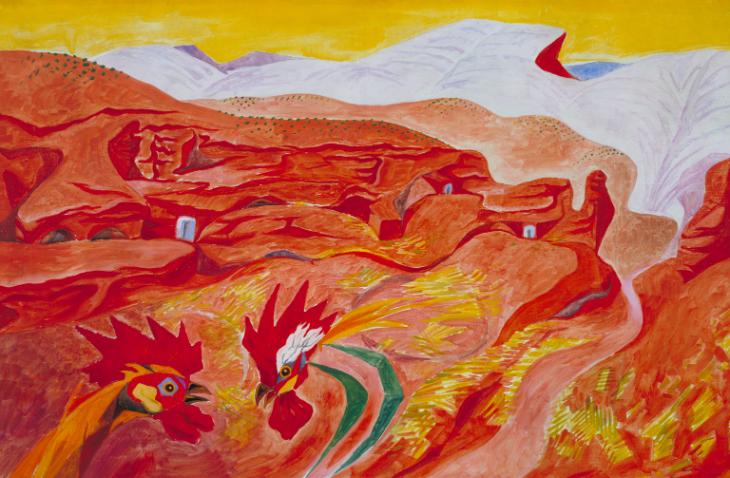
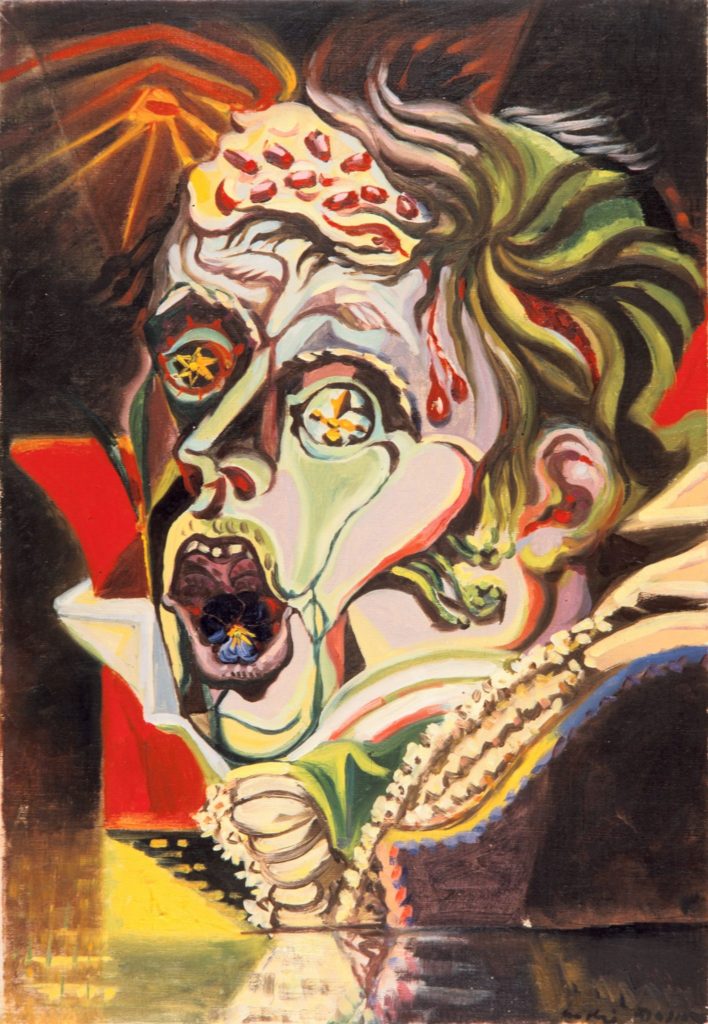
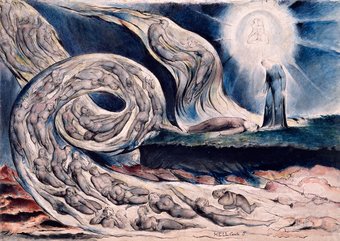
The first photographer I chose to study is Edward Honaker. He focuses on photographing mental health in a very personal way as he from the age of 19 was diagnosed with a mood disorder. This disorder is characterized by a persistent feeling of sadness, one which acts as an overwhelming obstacle during an individual’s day-to-day life. In other words – just two years ago – Honaker was diagnosed with depression. He focuses on blurring out his face in his images or tries to mask his identity away, this creates a concept of not knowing where his mind is really at or he doesn’t even know who he is anymore. You can see that all his images are in black white which creates a sad mood as there’s no colour this clearly interprets his own feelings and he does this by taking self-portraits. His own life from a very young age influenced his life which is why he takes his own images and the whole story behind his photography is about his own experience and his own mental health which makes his images so much more powerful when you know the photographer behind the work is dealing with the problems he’s photographing. To convey his inner thoughts and feelings, Honaker turned to his camera and creativity. What results is a surreal series of self-portraits – which are filled with powerful symbolism. Each black-and-white image is as artistic as it is revealing. If you’ve coped with depression or are currently coping with depression, Honaker’s work can act as a beacon of empathy. When he spoke about his experience he said “All I knew is that I became bad at the things I used to be good at, and I didn’t know why,”(Honaker 2015:1). This inspired me for the first shoot, which consisted of plain headshots which I then edited out to create a sense of depersonalization and losing yourself/personality due to mental health. Honaker’s work links it with history of mental health and surrealism art movement; it involves dreamscapes, symbolism and the unconscious mind; surrealism art changed modernism by encouraging artists to delve into their imaginations. Surrealism was steeped in the psychoanalytic works of Sigmund Freud and centred on understanding the unconscious. This can explain certain disorders such as depression which is sometimes caused due to childhood events that remain in the unconscious and the disorder is resolved when brought back into the conscious as an adult which links into Edward’s experience as he had to deal with depression from a young age, and if it wasn’t for the surrealism art movement, photographers wouldn’t be expressing their emotional states. His work significantly links in with surrealism as the ability to evoke dream-like scenarios in photography became central to surrealism. Photo effects such as double exposure, blurring and distortion helped create images that were evocative, hallucinatory, and sometimes upsetting. The purpose of these effects was to create an image alienated from reality as if it was a window into another dimension. Edward uses many of those editing processes such as blurring for most of his images.
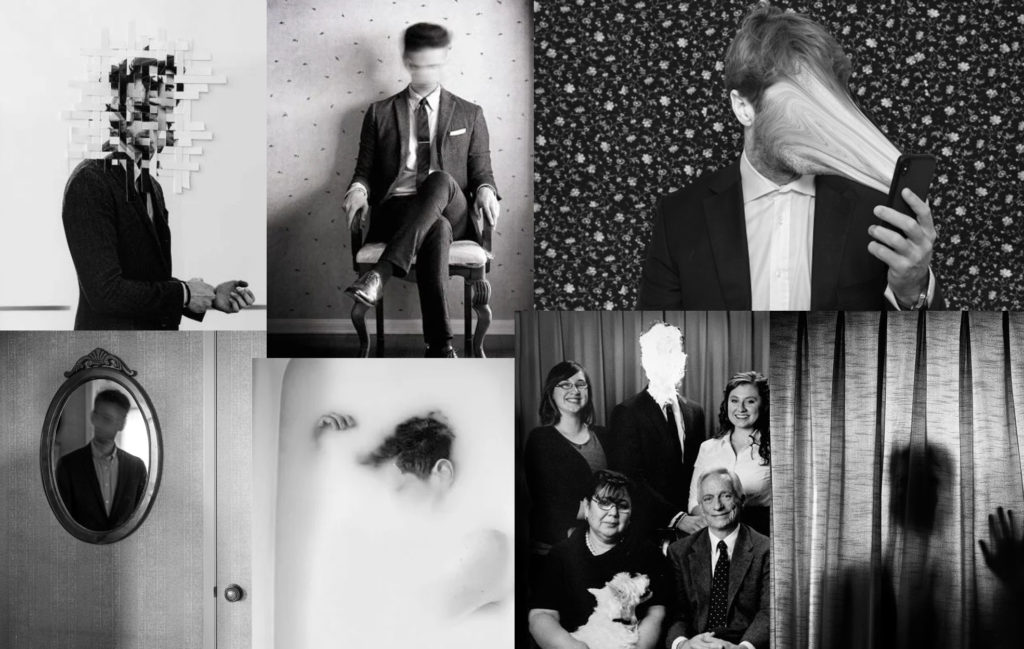
The second photographer I chose to study and become inspired by is Gabriel Isaak. The objective of Gabriel Isaak’s art is to shine a light on the experiences of being and the states of mind those brings along. His subjects are anonymous with the slightest glimmerings of consciousness, imprisoned in monochromatic settings, so the viewer can envision oneself as the subject, reflecting back on one’s own experiences and journey in life. He focuses on themes inspired by human psychology, dreams and romanticism, as well as his own experiences, especially the years he went through depression. What I find interesting about his work is the way he edits his images which makes them almost look like a dream and something that isn’t real which creates a unique idea of his mental state, like it’s all a dream. His photographs have a big emotional impact as it creates this sense of loneliness and being alone somewhere in a dream with your mind. The photographer intended to create a new vision of mental health and romanticise it instead of making it look like a scary thing to be afraid of. Both of my photographers link perfectly with each other as both of them have dealt with their own issues with depression and decided to photograph their experience in two completely different unique ways. Both of them create an idea in the audience’s mind of what it’s like to deal with these issues or if someone from the audience is already dealing with the same problems it can create a sense of feeling safe and comfort knowing there are others that feel the same and their choosing to photograph their feelings in a unique way. The photographer Gabriel Isaak inspired me for my photoshoots at home and in a very open natural environment to create an illusion of a dream as well as use more advanced photoshop skills to achieve this idea. Surrealism would have had a huge impact on Isaak’s work as surrealism derived significant inspiration from psychoanalysis, developed by Sigmund Freud to treat mental disorders. “The set of theories and techniques were established to delve into the unconscious mind It aimed to illuminate the causes of abnormal and unhealthy mental habits.” (Davis 2020:1) According to psychoanalysis, the mind is separated into the conscious and unconscious. Psychoanalytic treatment aimed to bring the repressed desires and fears of the unconscious mind to the surface. This can be seen in his photos because as mentioned before the silhouettes he uses represent the conscious mind and how it can feel detached from you body. One of the founding fathers of surrealism Andre Breton cited psychoanalysis as a gateway to restoring one’s artistic identity, liberated from conformity and social normality. (Davis 2020:1) He asserted that the application of psychoanalytic thought and automatism in art would make someone a true surrealist artist. For example Rene Magritte’s work , a famous surrealist artist in 1927, shows how mental health was presented back in the early days. This art shows most of the woman’s face cut out and dragged away from her body , unmasking what’s underneath it which looks like a solid, dark wooden texture of nothing with small pins it, implying there’s a hard material underneath her face that acts as a ‘mask’ and the texture underneath it is the woman’s mental health which is quite hidden and acting as a secret to help hide her real identity. This is really similar in how Gabriel Isaak presents mental health in his images, through using open spaces , like Magritte’s image that has an ocean, and using plain silhouettes or shadows of people to present their conscious and mental state- creating a feeling of loneliness and emptiness as your mind travels away from your body due to having a disorder.

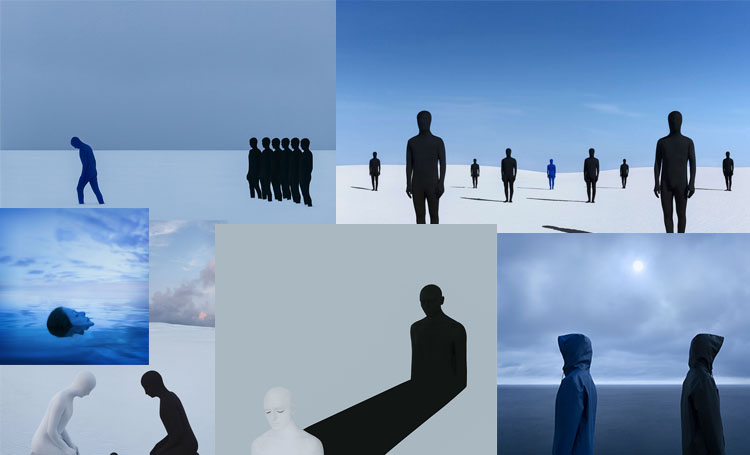
The two artists I have studied in this project both clearly focus on presenting mental health through photography. Both of them taking aspects of surrealism into the work is seen as the conscious and unconscious mind is presented. They both show their feelings and emotions through taking images, and how they feel inside as we know their background with mental illness. They both mask their identity in some sort of way and either by blurring the faces out or just completely using silhouettes which doesn’t show a face , this creates a feeling of identity loss as a mental illness can affect your personality a lot and who you think you are. The difference between their work is that Isaak uses much more dream-like effects making them images almost look unreal because of how empty the background is , however Honaker uses his own self-portraits for his images and edited them by blurring his facial features out in different ways and in different environments. The main common theme from both of their work is sadness, as the small notes of blue shades and silhouettes indicate loneliness and sadness. Honaker only photographs himself which show him being alone dealing with his issues with no one around him, as he said , “Your mind is who you are, and when it doesn’t work properly, it’s scary.”(Honaker 2015:2).
Overall I think I’ve presented my ideas and the concept of mental health very well through taking several different shoots that were inspired by my two chosen photographers. I explored how it might feel to deal with a mental illness and not really knowing how to deal with it or loosing your personality , though a simple shoot consisting of editing and blurring certain features to show uncertainty in how an individual may feel and bringing attention to the mind, as well as at home shoots to show what everyday life may be like and in big open spaces to create a sense of loneliness. I photographed an individual in a way that shows her feelings and her mental state through a series of portraits exploring her body language. I experiment with different editing techniques such as blurring out the model’s face in order to show you don’t feel like yourself when your mind isn’t working properly. A previous study I have done in my A-level photography work that links in with my personal study is the loss of identity which is when you’re not too sure what you’re doing or what you want to do when you grow up, which I achieved through edited portraits. My work will develop through editing all my images using a combination of Lightroom and Photoshop and turning them from simple headshots and full body shots into a way of presenting mental health in the style of Gabriel Isaak by selecting the model’s silhouette and filling it in with a black shadow separating one figure from her body showing the state of her mind. The digital processes I like to work with are the quick selection tool, lasso tool, and the object selection tool as well as the blurring brush to achieve the final images I want. My two photographers helped me create this vision as I could see and learnt about how mental health can be presented through a visual concept and photography as its a very difficult topic to express through photos as everyone’s experience and mind is different , they made me understand how certain editing and specific environments can help in achieving spreading the message I want.
Bibliography
Davis, C ( 19 May 2020). Surrealism Art Movement: A Window into the Mind. The Collector , BA Art History (2020) ( https://www.thecollector.com/surrealism-art-movement/) Accessed 10 Feb 2022.
Dennett, T (15 April 2009). Jo Spence’s camera therapy: personal therapeutic photography as a response to adversity. European Journal of Psychotherapy & Counselling. (Volume 11, 2009.): 7-19 Issue 1: Phototheraphy and Therapeutic Photography. (Jo Spence’s camera therapy: personal therapeutic photography as a response to adversity: European Journal of Psychotherapy & Counselling: Vol 11, No 1 (tandfonline.com) Accessed 9 Feb 2022.
Holmes, L and Honaker, E (2015). These Photos Capture The Anguish Of Living With Depression. Huffpost (2015) (https://rocket04.jeron.je/access?ABQ6DI4E7VWA3WWSPAJTI2MV4KSCHDYY) Accessed 10 Feb 2022.
Martin, R. and Spence, J. (2003), ‘Photo-Therapy: Psychic Realism as a Healing Art?’ in Wells, L. The Photography Reader. London; Routledge
